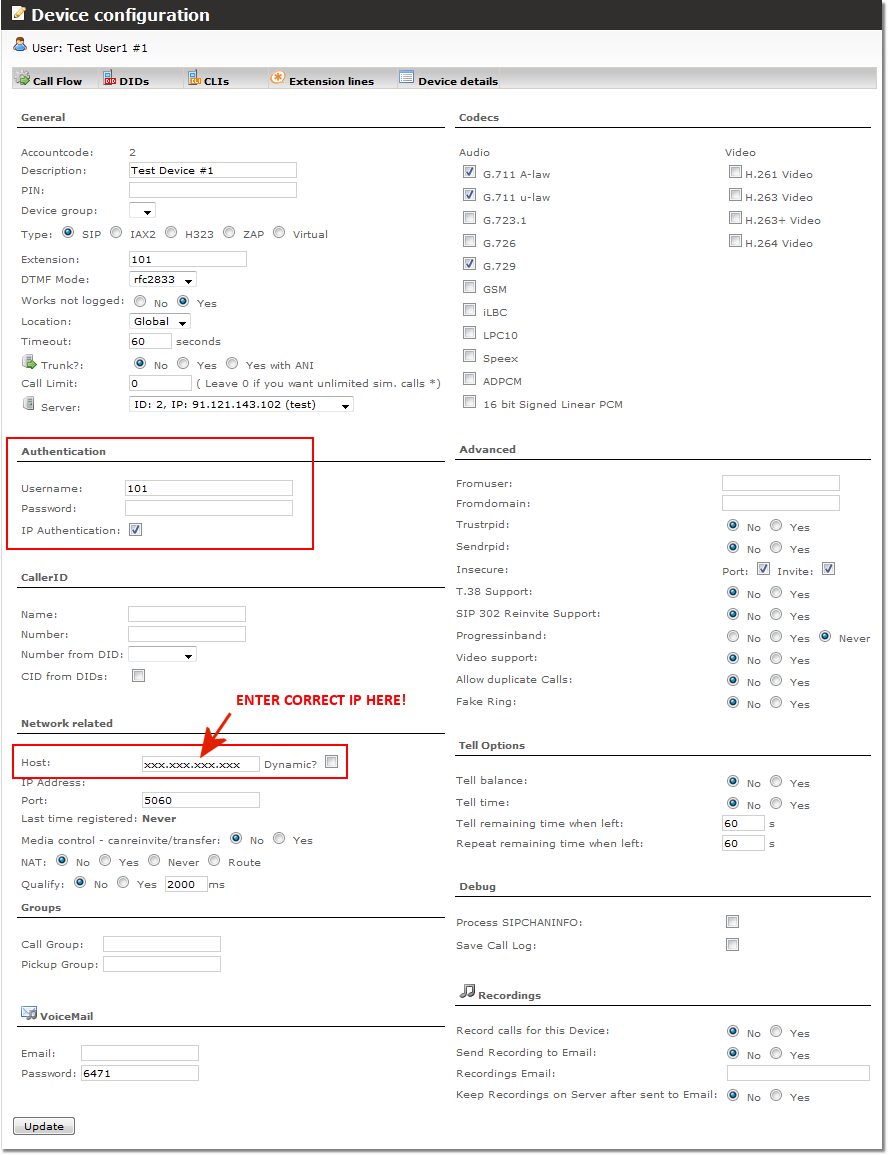Difference between revisions of "Authentication"
From Kolmisoft Wiki
Jump to navigationJump to search
| Line 13: | Line 13: | ||
[[Image:ip_authentication_example.png]] | [[Image:ip_authentication_example.png]] | ||
<br><br> | |||
== Restrictions == | |||
* You cannot create/edit [[Providers|Provider]] if you already have [[Devices|Device]] with same IP and port combination. However, you can have two [[Providers]] with same IP and port combination. | |||
* You cannot have two [[Devices]] with same IP and port combination. | |||
NOTE: if you need to send and receive calls from same IP and port, please [[Configure Provider which can make calls]]. | |||
<br><br> | <br><br> | ||
== See also == | == See also == | ||
* [[Device with IP Authentication is asked for Username/Password]] | * [[Device with IP Authentication is asked for Username/Password]] | ||
Revision as of 14:31, 14 March 2012
There are two types of authentication in MOR: IP authentication, and using login and password.
IP authentication means accepting calls from a given IP automatically, without requesting any additional login data.
To use login and password authentication, the sender needs to register his phone or pbx to MOR before sending calls, otherwise MOR will reject them.
Note: IP and login/password authentication cannot work together for the same device or provider.
IP Authentication
This example shows how to configure device to use IP Authentication. Important parts are marked in RED:
Restrictions
- You cannot create/edit Provider if you already have Device with same IP and port combination. However, you can have two Providers with same IP and port combination.
- You cannot have two Devices with same IP and port combination.
NOTE: if you need to send and receive calls from same IP and port, please Configure Provider which can make calls.

